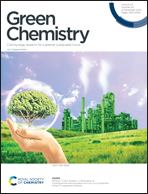An eco-friendly, low-cost, and automated strategy for phosphoproteome profiling†
Abstract
Reversible protein phosphorylation plays a vital role in many biological processes. In current phosphoproteomics, targeted enrichment before mass spectrometry (MS) analysis is essential. Many kinds of materials have been developed for phosphopeptide enrichment, but these typically involve complex fabrication process and high consumption of chemicals. Furthermore, the enrichment of phosphopeptides is offline and requires multiple manual steps, thereby making it a tedious workflow with high consumption of organic solvents and plastic consumables. To alleviate these problems, we propose a set of eco-friendly strategies for phosphoproteome profiling by developing a reusable phos-trap column via a one-pot mild sol–gel process and establishing an automated online analytical platform with low cost and low waste. This platform also demonstrated high phosphosite coverage, sensitivity, selectivity, and a wide linear range when a standard phosphoprotein (α-casein) was used for the initial development assessment. In subsequent analyses of HeLa cells and maize seedlings, a total of 6575 and 3741 phosphorylation sites were characterized, respectively, using three single-shot technical replicates for each sample type with excellent qualitative and quantitative reproducibility. Taken together, this phos-trap column and automated online analytical platform are expected to bring environmental and low-cost technological advancements to phosphoproteomics, especially for large-scale tasks.



 Please wait while we load your content...
Please wait while we load your content...